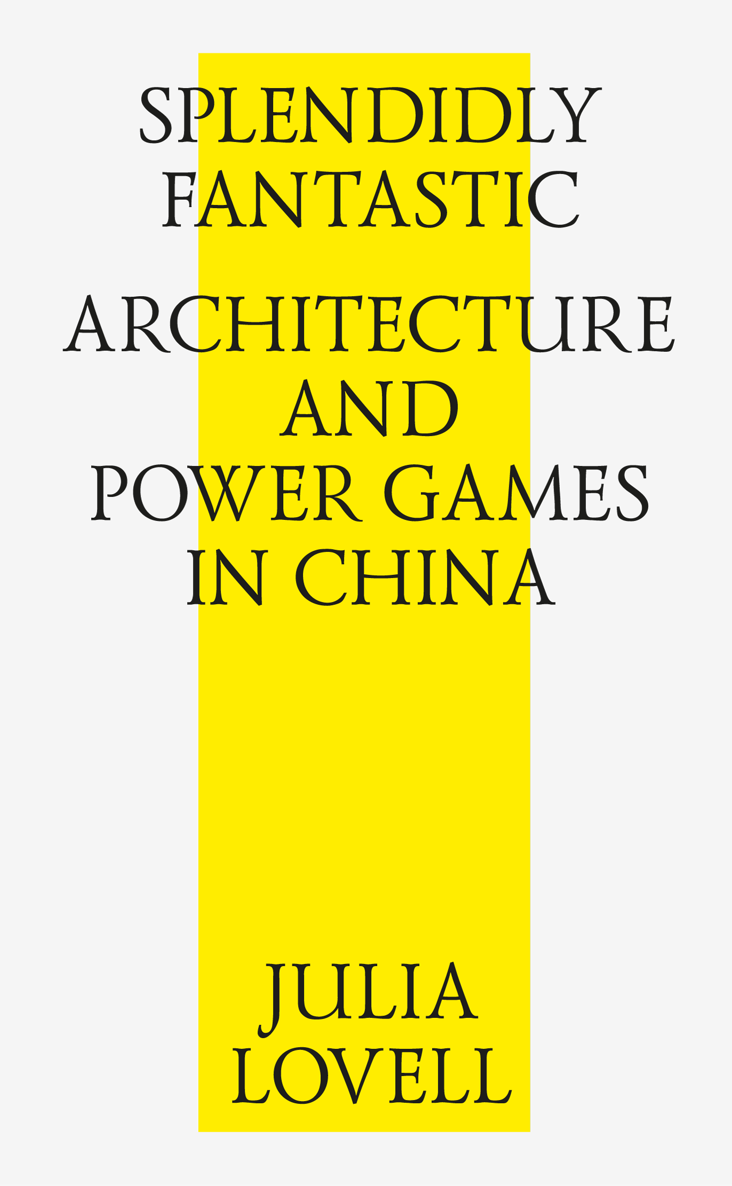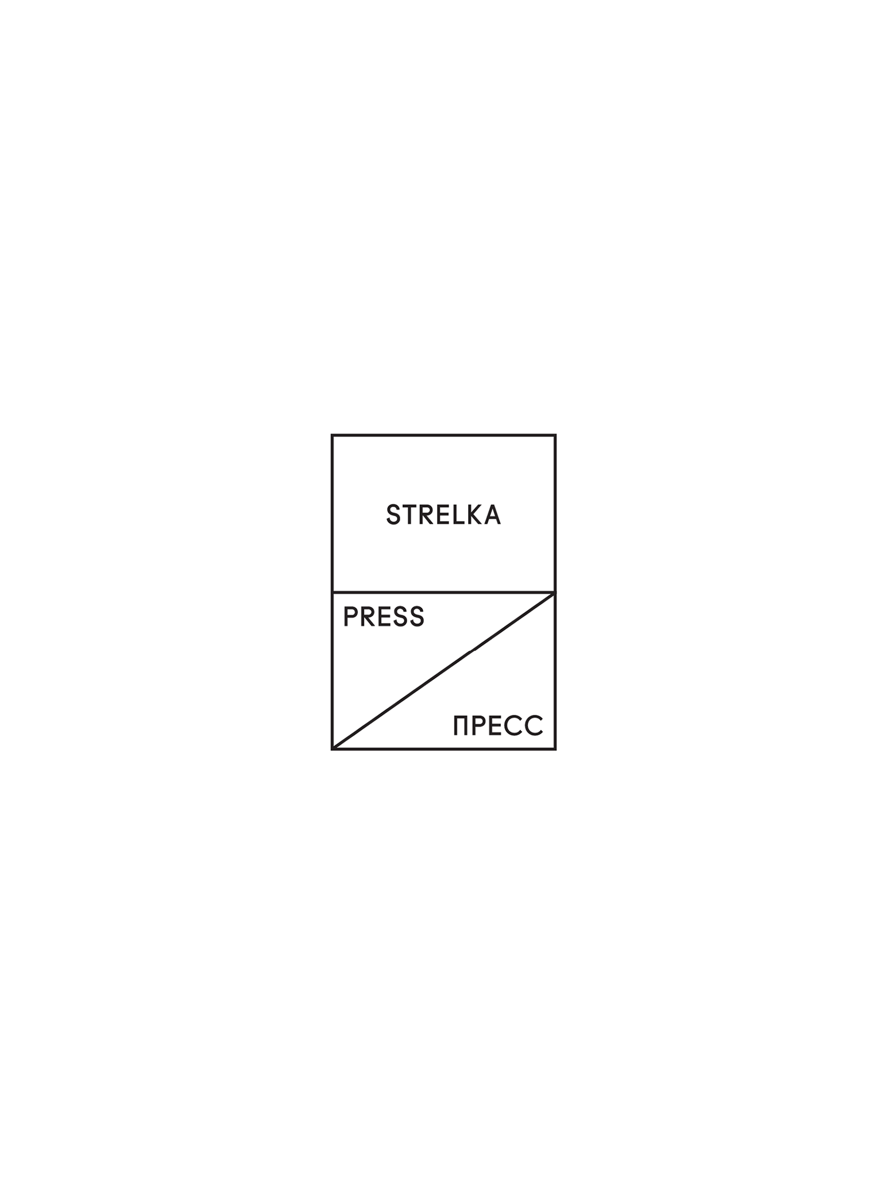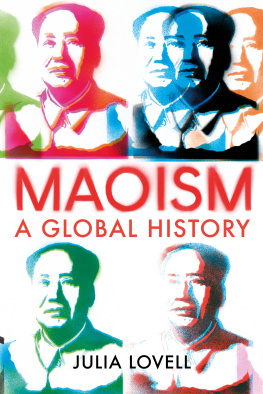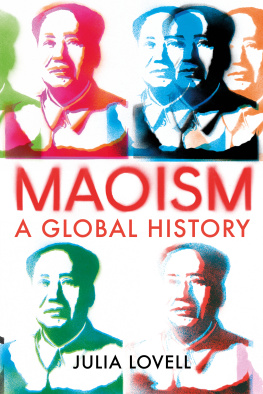Julia Lovell - Splendidly Fantastic
Here you can read online Julia Lovell - Splendidly Fantastic full text of the book (entire story) in english for free. Download pdf and epub, get meaning, cover and reviews about this ebook. year: 2014, publisher: Strelka Press, genre: Politics. Description of the work, (preface) as well as reviews are available. Best literature library LitArk.com created for fans of good reading and offers a wide selection of genres:
Romance novel
Science fiction
Adventure
Detective
Science
History
Home and family
Prose
Art
Politics
Computer
Non-fiction
Religion
Business
Children
Humor
Choose a favorite category and find really read worthwhile books. Enjoy immersion in the world of imagination, feel the emotions of the characters or learn something new for yourself, make an fascinating discovery.
- Book:Splendidly Fantastic
- Author:
- Publisher:Strelka Press
- Genre:
- Year:2014
- Rating:5 / 5
- Favourites:Add to favourites
- Your mark:
- 100
- 1
- 2
- 3
- 4
- 5
Splendidly Fantastic: summary, description and annotation
We offer to read an annotation, description, summary or preface (depends on what the author of the book "Splendidly Fantastic" wrote himself). If you haven't found the necessary information about the book — write in the comments, we will try to find it.
Splendidly Fantastic — read online for free the complete book (whole text) full work
Below is the text of the book, divided by pages. System saving the place of the last page read, allows you to conveniently read the book "Splendidly Fantastic" online for free, without having to search again every time where you left off. Put a bookmark, and you can go to the page where you finished reading at any time.
Font size:
Interval:
Bookmark:



As autumn turned to winter in 2007, Beijing was transfixed by its newest landmark: the leaning twin towers of China Central Televisions half-finished headquarters. Masterminded by Rem Koolhaas for the Office for Metropolitan Architecture (OMA), the building was a startling departure from the straight-up-and-down skyscrapers that dominated the rest of the capitals Central Business District. Koolhaass massive structure was to be an angular loop: a pair of asymmetrical legs (234 and 194 metres tall) linked by a crowning L-shaped tube. That November, the city was buzzing with rumours that any day now the towers two black, diamond-patterned chopsticks tilting unsteadily towards each other through the smog would be joined. Enhancing the mysticism of the event, the projects engineers (the high-priests of this architectural cult) had decreed that the connection had to be made at dawn, to ensure the equal temperature of both sides. Obsessed bloggers and amateur photographers stalked the building in both the virtual and real worlds; journalists eked out their nights at the Foreign Correspondents Club bar, listening for tip-offs that the dawn to come would be the dawn.
When spectators werent generating pseudo-facts about the building about how it was supposedly the largest building in the world (besting the Pentagon), dependent on untested engineering wizardry, resting on a site the size of thirty-seven football fields they were debating its controversial politics. By designing the headquarters of Chinas most censored media outlet, was Rem Koolhaas architectures philosopher-king giving a glaze of avant-garde sophistication to an organisation that was Maoist in its commitment to controlling information? Was it appropriate to let a building that some have described as a monumental twisted pretzel, a deformed doughnut, or even as a sci-fi monster overshadow an historically low-rise imperial capital that was already being smashed to pieces by the Olympic modernisation drive? What did it say about the Chinese Communist Party that it had cleared a Maoist motorcycle factory (and hundreds of ordinary civilian dwellings) to make room for a totem to Western modernity? Or that it was spending on a single building perhaps twice its annual budget on rural healthcare? More pressingly: would the thing actually stand up?
See, for example, Robin Pogretin, Embracing Koolhaass Friendly Skyscraper, New York Times,16 November 2006, at http://www.nytimes.com/2006/11/16/arts/design/16rem.html (accessed 1 February 2012).
In 2007, OMAs iconic design became Chinas most spectacular piece of architectural theatre to date, outshining even Paul Andreus futuristic, domed National Theatre (inaugurated that September) and the most radical works of Olympic architecture (the Birds Nest National Stadium; the Teflon-coated Swimming Centre, or Watercube). Its celebrity (or notoriety) has lessened little since, thanks in no small part to CCTV staff burning down much of a wedge-shaped sister building, a cultural centre and hotel also designed by OMA, during an illegal fireworks display in 2009. (The fact that Koolhaass co-designer was a highly photogenic young architect called Ole Scheeren who is currently dating one of Chinas most famous actresses and is given to posing moodily in designer clothes in front of his great work has probably helped the media stay focused on the project.)
The CCTV building also seized imaginations because it expressed so perfectly the strange politics of contemporary Chinese architecture: the Communist governments twin obsession with image-boosting monumentality and cutting-edge design; its addiction (whatever the cost) to both national power projection and to kow-towing to foreign know-how; and the curious collaboration between globe-trotting starchitects and the worlds last great Communist dictatorship. The recent history of Chinas architecture has reproduced, in microcosm, the paradoxes of the countrys political system: in which state domination is veneered with free-market capitalism; in which cosmopolitan glamour coexists with, and often supports, one-party authoritarianism; and in which a Communist government is legitimising itself by erasing its proletarian past and building shrines to capitalist modernity.
* * *
Architecture has always projected power. It is a means for inflating the individual ego to the scale of a landscape, a city, or even a nation, writes Deyan Sudjic. What architecture does, as no other cultural form can, is to glorify and magnify the individual autocrat and suppress the individual into the mass. It can be seen as the first, and still one of the most powerful forms of mass communication.
Deyan Sudjic, The Edifice Complex: How the Rich and Powerful Shape the World (London: Penguin, 2006), 3245.
Ibid., 27, 37.
Sudjic, The Edifice Complex, 7677.
The Chinese have invested more meaning in the built environment than any other civilisation. For more than two millennia, imperial architecture was ruled by an elaborate body of rules called fengshui that in the interests of maximising political auspiciousness shaped every detail of building location and design. The Chinese emperor claimed to be the Son of Heaven; his power derived from his ability to commune between the natural and the human worlds. His palaces and temples were an important part of fulfilling that brief: they had to demonstrate the rulers skill in balancing the forces of nature and man. A succinct six-syllable formula, tianling dili renhe , summed up the cosmic demands on the empires architects: Heavenly influences must be auspicious, geographical features beneficial, and the actions of man in harmony with the social, cultural and political situation. In their position, layout and decorative schemas, palaces needed to be not only functional, but also symbolic of emperors potent combination of worldly and supernatural authority.
Evelyn Lip, Fengshui: Environments of power a Study of Chinese Architecture (London: Academy Editions, 1995).
Imperial Beijing embodied this complex of ideas about power projection. The decision to build a Chinese capital there was made at the start of the fifteenth century by one of Chinas most ruthless rulers: by the Yongle emperor of the Ming dynasty, a usurper who murdered his nephew, the designated heir, and massacred not only his critics, but their friends and relatives up to ten degrees of association. Yongles Beijing was, one recent historian has judged, the product of the most authoritarian imperial court in Chinese history.
Zhu Jianfei, Chinese Spatial Strategies: Imperial Beijing 1420-1911 (London: Routledge, 2004), 223.
The site of the city was selected with utmost care for its geopolitical symbolism. It lay on the hinge between two worlds that Chinese emperors had long aspired to control: agrarian China to the south; and the nomadic steppe to the north. Within the capitals thick walls (the first part of the city to go up), Beijings design figuratively recreated the centralised order of the empire itself. Yongles capital was sliced in two by a central north-south axis, some seven and a half kilometres long. At the mid-point of this line was the imperial palace, the Forbidden City (itself named after an auspicious constellation, traditionally the home of the supreme deity around which other stars revolved). The palace lay at the heart of a triple set of square walls, all orientated to the points of the compass, forcing visitors towards one conclusion: that the Chinese emperor, the Son of Heaven enthroned within his capital the universe in harmonious microcosm both physically and spiritually represented the cosmic centre of the world.
Font size:
Interval:
Bookmark:
Similar books «Splendidly Fantastic»
Look at similar books to Splendidly Fantastic. We have selected literature similar in name and meaning in the hope of providing readers with more options to find new, interesting, not yet read works.
Discussion, reviews of the book Splendidly Fantastic and just readers' own opinions. Leave your comments, write what you think about the work, its meaning or the main characters. Specify what exactly you liked and what you didn't like, and why you think so.












